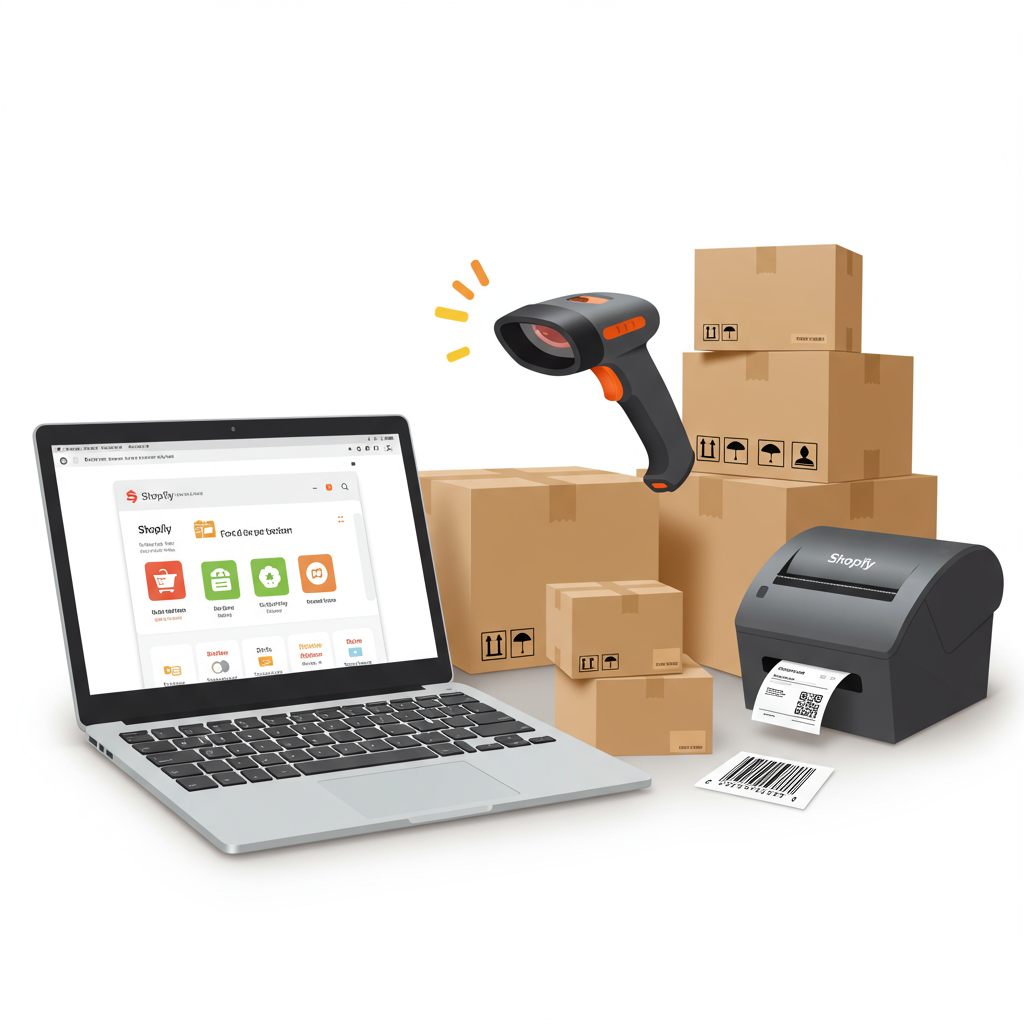Transforming Your E-commerce Operations from Manual Grind to Automated Gold
As a Shopify merchant, I know firsthand the daily grind of running an e-commerce business. From marketing and sales to customer service, there’s always something demanding your attention.
Among these many tasks, order fulfillment often emerges as one of the most time-consuming and complex, especially as your business grows.
Initially, handling a few orders manually might seem manageable. You print labels, pack boxes, and drop them off at the post office. It’s a hands-on approach that works for small volumes.
However, what happens when those few orders turn into dozens, or even hundreds, every single day? The manual process quickly becomes a bottleneck, eating into your profits and your precious time.
This is precisely where fulfillment automation steps in, transforming a chaotic, labor-intensive process into a streamlined, efficient operation. It’s about leveraging technology to handle repetitive tasks.
For me, the decision to automate was a game-changer. It wasn’t just about saving time; it was about scaling my business without needing to hire an army of staff for fulfillment alone.
So, what exactly does ‘automating fulfillment’ mean in the context of Shopify? It involves setting up systems and rules that automatically manage various stages of your order processing.
This can range from tagging orders based on specific criteria to automatically generating shipping labels, updating inventory, and even sending customer notifications.
The primary benefit I’ve experienced is a significant reduction in manual errors. Humans, myself included, are prone to mistakes, especially when dealing with high volumes and repetitive tasks.
Automation ensures consistency and accuracy, leading to fewer mis-shipped items, incorrect addresses, or stock discrepancies. This directly translates to happier customers and fewer returns.
Another huge advantage is the time liberation. Imagine reclaiming hours each day that were previously spent on printing, packing, and tracking. This time can then be reinvested into growth strategies.
Scalability is also paramount. With automated systems in place, your fulfillment process can effortlessly handle spikes in demand, like during holiday seasons, without breaking a sweat.
This means you’re always ready to grow, without the fear that your operational capacity will limit your sales potential. It’s about building a robust foundation for future expansion.
Customer satisfaction naturally improves. Faster processing times mean quicker deliveries. Automated tracking updates keep customers informed, reducing ‘where is my order?’ inquiries.
Let’s dive into the key areas where you can implement automation within your Shopify fulfillment workflow. The first is order processing itself.
You can automate tasks like tagging orders based on product type, shipping method, or customer segment. For instance, ‘express shipping’ orders can be tagged for priority handling.
Inventory management is another critical area. Automation can sync stock levels across multiple sales channels, preventing overselling and ensuring accurate inventory counts.
You can set up alerts for low stock levels, prompting you to reorder before you run out of popular items, thus avoiding frustrating backorders for your customers.
Shipping automation is perhaps the most impactful. This includes automatically generating shipping labels with the correct carrier and service based on order weight, destination, and customer choice.
Many apps can also automatically send tracking information to your customers the moment a label is created, keeping them in the loop without any manual intervention from your side.
Customer communication extends beyond tracking. Automated emails for order confirmation, shipping updates, and even delivery notifications enhance the post-purchase experience.
For implementing these automations, Shopify offers powerful native tools like Shopify Flow. I’ve found Flow to be incredibly versatile for creating custom workflows.
With Shopify Flow, you can set up triggers (e.g., ‘order paid’) and actions (e.g., ‘add tag ‘fulfilled’, send email to supplier’). It’s a no-code solution that empowers merchants.
Beyond Flow, a vast ecosystem of third-party Shopify apps can supercharge your fulfillment. Shipping apps like ShipStation or ShippingEasy integrate directly with your store.
Inventory management apps, ERP systems, and even integrations with 3PLs (Third-Party Logistics providers) can further automate the entire process, from warehouse picking to final delivery.
When considering a 3PL, remember they essentially take over your entire fulfillment operation, automating everything from storage to shipping. This is ideal for high-volume merchants.
My advice for getting started is to first audit your current manual fulfillment process. Identify the repetitive tasks and the biggest bottlenecks.
Then, choose one or two areas to automate first. Don’t try to automate everything at once. Start small, test thoroughly, and then expand your automation efforts.
Define clear rules for your automations. What triggers an action? What are the conditions? The more precise your rules, the smoother your automated workflow will be.
Always test your automations before going live. Place test orders, check if tags are applied correctly, if emails are sent, and if labels are generated as expected.
Finally, monitor your automated processes regularly. Technology evolves, and your business needs change. Be prepared to refine and optimize your workflows over time.
What do you think about the insights shared in this article? Have you tried automating your Shopify fulfillment, and what were your experiences?
In conclusion, automating fulfillment in Shopify isn’t just a luxury; it’s a necessity for any merchant looking to scale efficiently and provide an exceptional customer experience.
It frees you from the mundane, allowing you to focus on what truly matters: growing your brand and connecting with your customers. Embrace automation, and watch your business thrive.






